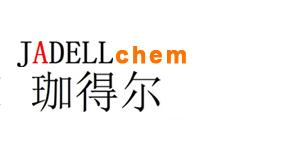Recombinant Mouse VEGF164 (P.pastoris-expressed), 一种血管内皮生长因子亚型剪接变体,在通过 VEGFR-2 诱导内皮细胞间黏附分子-1的表达、VEGFR-1 诱导白细胞的迁移以及在成人角膜中炎症和血管生成方面更有效。
Synonyms
rMuVEGF164; VEGF-A; VPF ; 重组小鼠血管内皮生长因子 164 (P.Pastoris 表达)
Species
MouseSource
P. pastoris Accession
Q00731 Gene ID
22339 Molecular Weight
Approximately 39 kDa AA Sequence
MAPTTEGEQK SHEVIKFMDV YQRSYCRPIE TLVDIFQEYP DEIEYIFKPS CVPLMRCAGC CNDEALECVP TSESNITMQI MRIKPHQSQH IGEMSFLQHS RCECRPKKDR TKPEKHCEPC SERRKHLFVQ DPQTCKCSCK NTDSRCKARQ LELNERTCRC DKPRR Biological Activity
The ED50 is <6 ng/mL as measured by HUVEC cells, corresponding to a specific activity of >1.7 × 105 units/mg. Appearance
Lyophilized powder. Formulation
Lyophilized after extensive dialysis against 25 mM HEPES and 150 mM NaCl, pH 7.0. Endotoxin Level
<1.0 EU/μg, determined by LAL method. Reconstitution
Reconstitute the lyophilized recombinant Mouse VEGF164 (P.pastoris-expressed) (rMuVEGF164) to 100 µg/mL using ddH2O. Storage & Stability
Lyophilized recombinant Mouse VEGF164 (P.pastoris-expressed) (rMuVEGF164) is stored at -20°C. After reconstitution, it is stable at 4°C for 4 weeks or -20°C for longer. It is recommended to freeze aliquots at -20°C or -80°C for extended storage. Shipping
Room temperature in continental US; may vary elsewhere. Background
VEGF164 (165) is a proinflammatory isoform. VEGF164 was found to be significantly more potent at inducing inflammation. In vivo blockade of VEGF receptor (VEGFR)-1 significantly suppressed VEGF164-induced corneal inflammation. In vitro, VEGF164 more potently stimulated intracellular adhesion molecule (ICAM)-1 expression on endothelial cells, an effect that was mediated by VEGFR2. VEGF164 was also more potent at inducing the chemotaxis of monocytes, an effect that was mediated by VEGFR1. In an immortalized human leukocyte cell line, VEGF164 was found to induce tyrosine phosphorylation of VEGFR1 more efficiently[1]. VEGF164 is an important isoform in the pathogenesis of early diabetic retinopathy[2]. |



